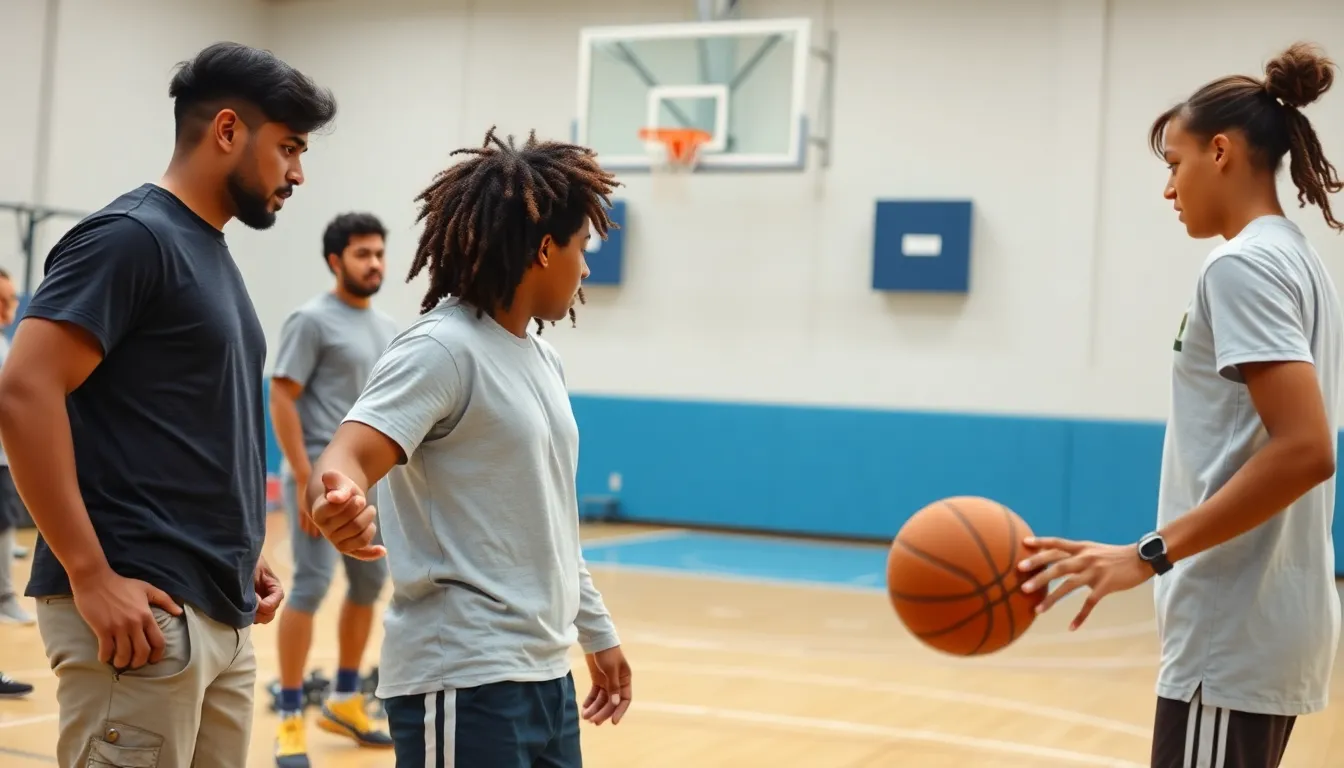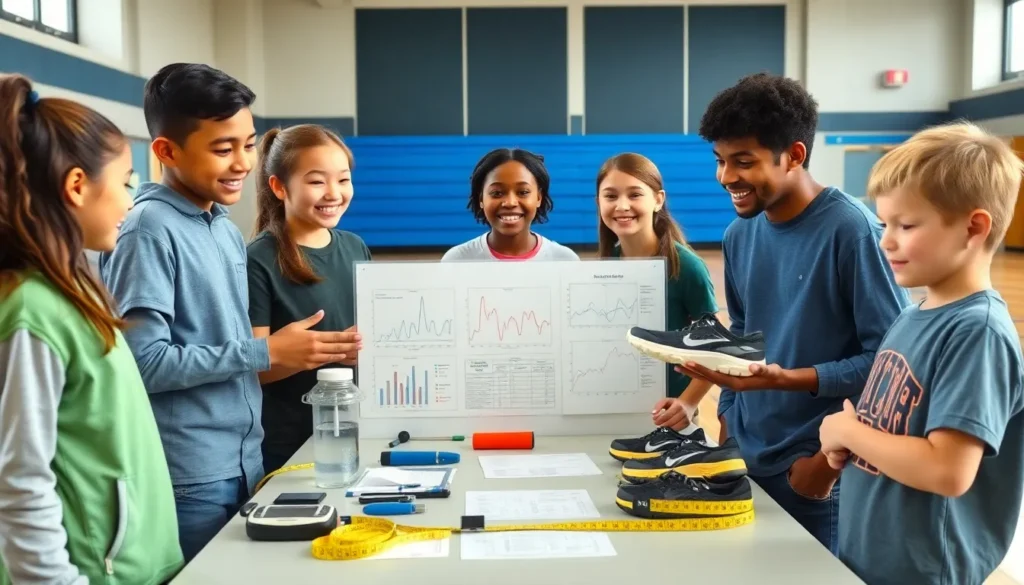Imagine a world where science and sports collide in the most entertaining way possible. Sports science fair projects offer a unique opportunity to explore the fascinating relationship between athletic performance and scientific principles. Whether it’s testing the aerodynamics of a football or analyzing the biomechanics of a perfect jump shot, these projects can turn any budding scientist into the next sports superstar.
Sports Science Fair Projects
Sports science fair projects explore the scientific principles behind athletic performance. These projects offer students a chance to apply knowledge in physics, biology, and chemistry to real-world sports scenarios. Many projects focus on analyzing sports equipment, such as the effect of material on a baseball’s flight or the influence of shoe design on running speed.
Students can investigate physiological aspects as well. For example, examining how hydration affects endurance during exercise can yield valuable insights. Another common area of study is biomechanics, where students measure angles and forces to determine optimal techniques in various sports activities.
Data collection forms a core component of these projects. Students gather information through experiments, surveys, or performance tests. They may record heart rates during different exercise intensities or measure the impact of resistance training on muscle growth.
Results from these investigations contribute to a deeper understanding of how science applies to sports. Visuals, such as graphs and charts, can effectively convey findings, making presentations engaging. Additionally, students gain hands-on experience in the scientific method, enhancing their research and analytical skills.
Exploring past sports science fair projects provides inspiration. Projects that tested the effects of different training methods on sprinting times or analyzed the optimal angle for basketball shots stand out as significant examples. By participating in these projects, students not only hone their skills but also foster a passion for science and its applications in sports.
Popular Categories of Sports Science Projects

Various categories of sports science projects attract students’ interest. Each category allows students to delve into specific areas of study within sports science.
Biomechanics in Sports
Biomechanics focuses on the movement and mechanics of athletes. Projects might explore the angles used in a basketball free throw or analyze the torque in a sprinter’s start. Students could measure joint angles during different athletic actions or investigate how injuries occur from improper movements. By emphasizing muscle functions, students gain insights into optimizing performance and preventing injuries.
Exercise Physiology Experiments
Exercise physiology examines the body’s responses to physical activity. Students often conduct experiments on how different training regimens affect heart rate and stamina. Testing hydration levels helps them understand its impact on endurance during various activities. By analyzing their findings, students learn how intensity and duration influence athlete performance and recovery. These projects stress the importance of tailoring exercise to individual needs for maximized athletic output.
Sports Psychology Studies
Sports psychology studies the mental aspects of athletic performance. Projects often examine how motivation affects training outcomes or the impact of anxiety on competitive performance. Students can survey athletes about self-confidence and focus strategies. Exploring the psychological effects of visualization techniques on performance provides valuable insights. This category highlights the critical link between mental preparedness and success in sports.
Tips for Creating Effective Sports Science Fair Projects
Creating successful sports science fair projects requires careful planning and execution. Students must select engaging topics, design precise experiments, and present findings clearly.
Choosing the Right Topic
Selecting a compelling topic plays a crucial role in project success. Investigating areas like biomechanics or sports psychology can spark interest. Consider personal interests and available resources before deciding. An engaging question leads to passionate research, driving motivation. Performance enhancement or injury prevention also presents endless possibilities. Projects should focus on specific variables, ensuring clarity and depth.
Designing Your Experiment
Crafting a solid experimental design ensures meaningful results. Define a clear hypothesis to guide the investigation. Control variables for accurate comparisons, and select appropriate methods for data collection. Incorporating measurements like speed, distance, or heart rate adds precision. Use reliable equipment to maintain consistency during trials. Planning for multiple trials helps enhance result reliability. Thoughtfully considering safety protocols ensures a smooth process.
Analyzing and Presenting Results
Interpreting collected data requires meticulous attention. Analyze results using statistical methods for clarity and depth. Graphs and tables offer visual aids, making findings easier to understand. Highlight trends and significant outcomes in presentations to capture interest. Summarize key insights to convey the research’s importance effectively. Thoughtful organization of data ensures the audience grasps the project’s significance. Engaging visuals increase the impact of the overall presentation.
Notable Examples of Successful Projects
Numerous sports science fair projects stand out for their innovative approaches and impactful results. One compelling project involved investigating how different types of footwear affect sprinting speed in high school athletes. Students tested various designs using timing systems to measure performance, demonstrating that specialized running shoes significantly improved times.
Another noteworthy project focused on the effects of hydration on athletic endurance. Students conducted experiments with participants engaging in extended physical activities while varying fluid intake. Results showed that optimal hydration levels enhanced endurance, underscoring the importance of fluid management in sports.
Biomechanics also offers engaging project opportunities. A group of students created a project analyzing the optimal angle for a basketball shot. Through simulations and practical tests, they discovered that an angle of approximately 45 degrees maximized shooting success rates, providing valuable insights for aspiring players.
Sports psychology serves as another rich area for exploration. A project examined the impact of positive self-talk on athletes’ performance. Participants performed tasks under two conditions: one with self-affirmations and one without. Results indicated a marked improvement in performance when positive self-talk was utilized, highlighting the mental aspect of sports.
Lastly, a project centered around the correlation between strength training and sprinting performance proved enlightening. Students conducted initial speed tests, followed by a structured strength training program, and subsequent tests revealed significant improvements in sprint times. This reinforced the concept that strength training can positively influence speed.
These examples illustrate how engaging in sports science projects not only enhances knowledge but also contributes to advancements in athletic performance. Each project showcases the integration of scientific principles into sports, inspiring future generations of athletes and scientists alike.
Conclusion
Engaging in sports science fair projects opens up a world of discovery for students. These projects not only cultivate an understanding of scientific principles but also ignite a passion for sports and research. By exploring various categories like biomechanics and exercise physiology, students can uncover the intricate connections between science and athletic performance.
With careful planning and execution, they can create impactful experiments that yield valuable insights. As they present their findings, they contribute to a growing field that bridges science and sports. Ultimately, these projects inspire the next generation of athletes and scientists, fostering a culture of inquiry and innovation in the world of sports.

